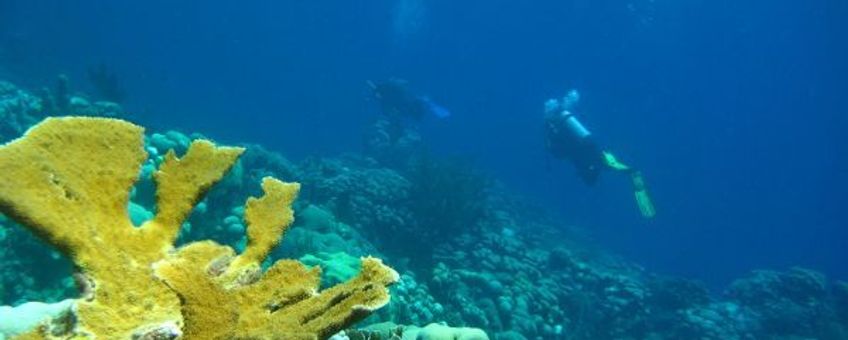
Nederland beschermt het koraal van Rif-Sint Marie, Curaçao
Bericht uitgegeven door Dutch Caribbean Nature Alliance (DCNA) [land] op [publicatiedatum]
De Nederlandse overheid heeft vier nieuwe draslanden (wetlands) van Internationaal belang aangewezen op het Nederlands Antilliaanse eiland Curaçao. Een van deze zogenaamde ‘Ramsar Sites’ is Rif-Sint Marie, een natuurreservaat en belangrijk vogelgebied van 667 hectare. Rif-Sint Marie is een relatief weinig verstoord gebied dat bestaat uit een zoutmoeras omgeven door een wadachtig gebied en bos. Veel watervogels, waaronder flamingo’s, zoeken hun voedsel in het moeras. In het koraalrif van Rif-Sint Marie leven naast verschillende bedreigde koraalsoorten ook de bedreigde lederschildpad en karetschildpad. Recreatie vormt momenteel de grootste bedreiging van het gebied.
Lees verder in het Engels......
The government of the Netherlands has designated four new coastal and near-coastal Wetlands of International Importance on the Netherlands Antilles island of Curaçao. One of the new so called ‘Ramsar Sites’ is Rif-Sint Marie, a conservation area and an important bird area of 667 ha.

Rif-Sint Marie
The area of Rif-Sint Marie is relatively undisturbed and undeveloped and comprises a salt marsh surrounded by mud flats, shrub land, and forests. The marsh is a strategic feeding habitat for flamingos and several waterbirds. The coral reef of Rif-Sint Marie is well developed and shelters several threatened coral species such as elkhorn coral (Acropora palmata) and staghorn coral (Acropora cervicornis), as well as endangered turtle species as leatherback turtle (Dermochelys coriacea; NL: lederschildpad) and hawksbill sea turtle (Eretmochely imbricata, NL: karetschildpad) and threatened fishes like Goliath grouper (Epinephelus itajara, NL: itajara*). Dense thickets of elkhorn coral sustain major ecological processes such as gross community calcification and nitrogen fixation; dense populations of this branching species dissipate wave energy and thus protect the coast. The area is currently used for recreational purposes like hiking, biking and guided eco-tours. The major threats to the site are uncontrolled access of visitors with dogs disturbing flamingos and potentially unwise development of touristic infrastructures in the surrounding area.
*De itajara is een straalvinnige vis uit de familie van zaagbaarzen (Serranidae)
Text: Nathaniel Miller, DCNA
Picture: Mark Vermeij
Nederlandse inleiding: Sara Mulder, De Natuurkalender
